Most of us have seen the Grand Canyon in postcards, epic drone shots or heard stories from family and friends. We might think we know what to expect, but standing on the rim, looking out over that endless expanse of red rock and shadow is a feeling you can’t capture in an image.
America’s Grand Canyon has a profound and humbling effect – visiting makes you feel both tiny and completely alive all at the same time. This geological destination and UNESCO World Heritage site impacts every visitor differently – in a good way. Here’s a complete guide to exploring the canyon, whether you’re exploring solo on one of Trafalgar’s US national park tours.
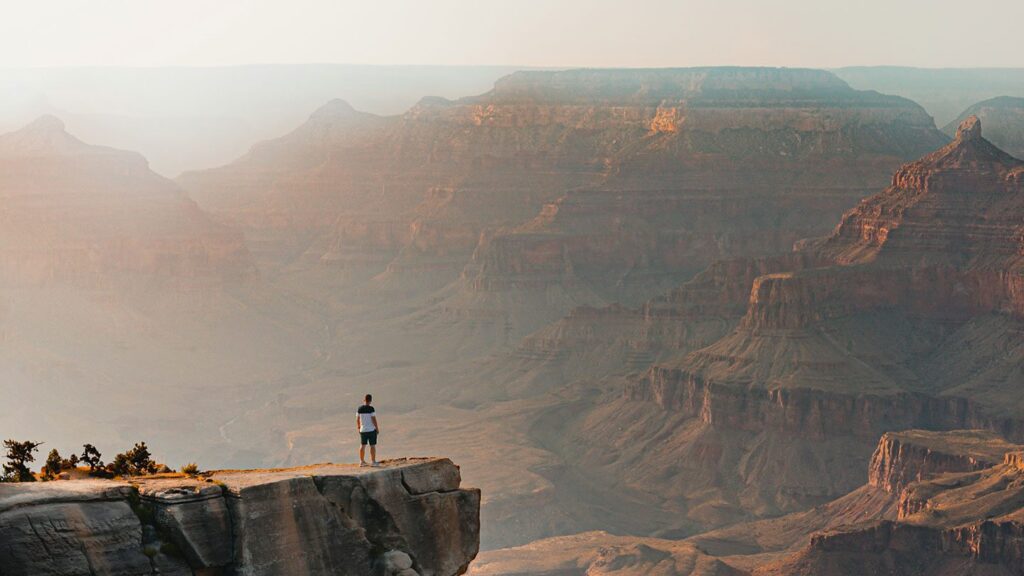

Where is the Grand Canyon?
The Grand Canyon is a massive chasm located in the northwest corner of Arizona in the United States. It’s an immense canyon, carved over time by the powerful Colorado River. While it’s in a remote location, it’s easily accessible by car and is a popular destination for road trippers from nearby states like Nevada and Utah. The canyon sits within the larger Grand Canyon National Park.
When is the best time to visit the Grand Canyon?
You can visit the Grand Canyon year round, so it depends what you’re willing to compromise on. This is a popular destination, so the shoulder seasons of spring (March-May) and fall (September-November) are the sweet spot. During these months, the weather is pleasant for hiking, and the crowds are more manageable than in the busy summer.
Summer brings peak crowds and extreme heat, especially in the inner canyon. While winter dusts the landscape with snow and you’ll find far fewer people exploring the Grand Canyon.
READ NEXT: Best time to visit the Grand Canyon
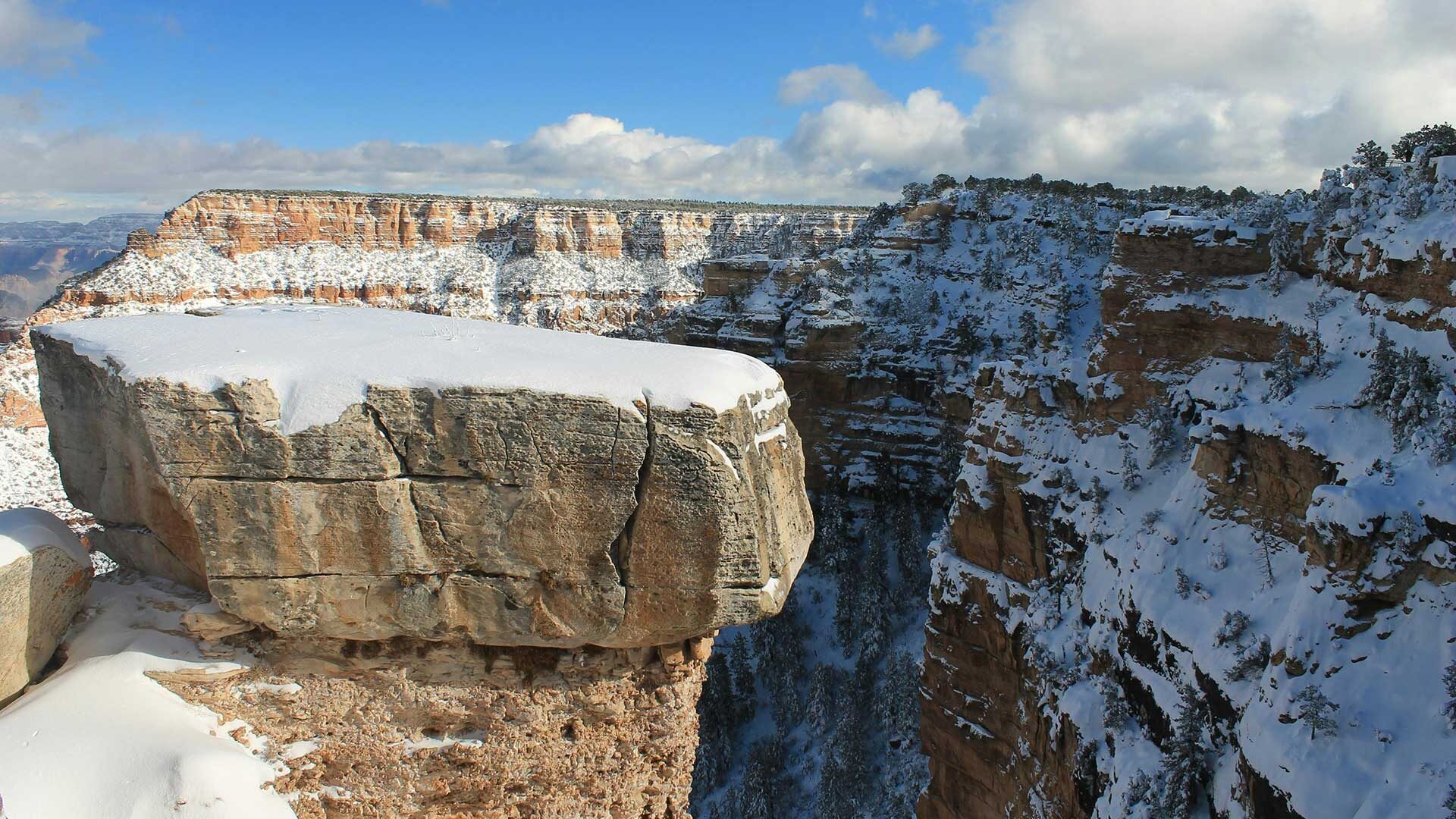

What is there to do and see at the Grand Canyon?
The Grand Canyon is an outdoor playground, and the most popular activity is to simply take in the breathtaking views from the rim. Some of the most popular viewpoints along the Grand Canyon’s South Rim are Mather Point (a favorite first-time view), the expansive Yavapai Point, and Hopi Point (ideal for sunset). On the more remote North Rim, visitors flock to Bright Angel Point and Point Imperial. In the Grand Canyon West area, the Grand Canyon Skywalk is a cool horseshoe-shaped glass-bottom lookout.
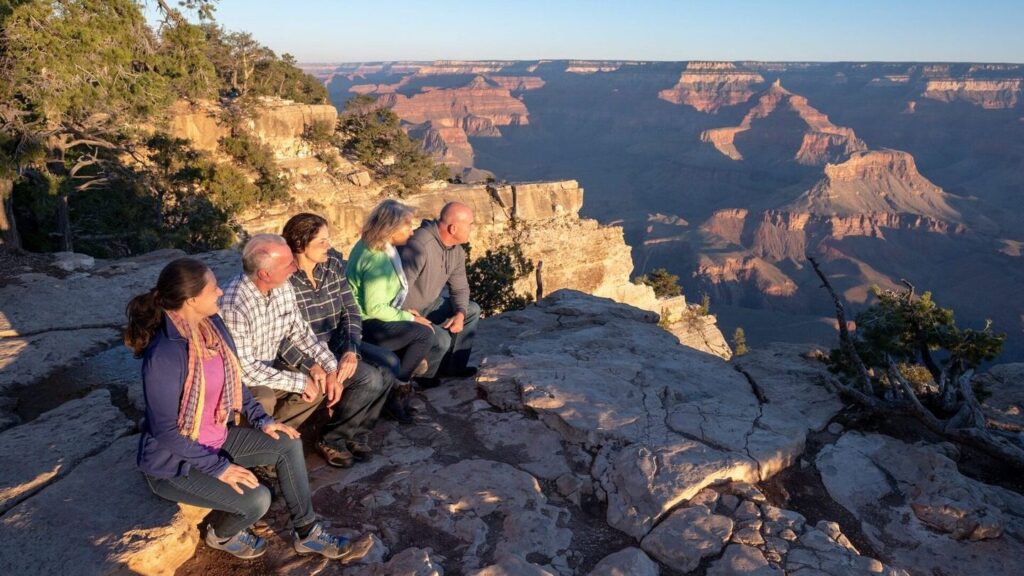

For those who want to get a little deeper, spend the day hiking. The paved Rim Trail connects some of the best viewpoints (though there is also a shuttle). Famous trails like the Bright Angel Trail and the South Kaibab Trail descend into the canyon, offering a challenging but rewarding way to experience the scale of the landscape. If you’re planning to hike, drop into the Grand Canyon Visitor Center to make sure the trails are open, or learn more about the canyon’s formation at the Yavapai Geology Museum.
Beyond hiking, there are some alternative and active ways to experience the Grand Canyon. Join excursions like a ranger-led program to learn about the park’s geology and wildlife. Soar above the canyon with a helicopter tour. Or chase thrills with a river rafting adventure down the Colorado River.
Tour not found.Finally, there are some great scenic drives in the area – like the Desert View Drive, which offers a chance to stop at various overlooks. With Trafalgar, you’ll wind along this road surrounded by multi-colored canyons, stopping at the Desert View Inter-Tribal Cultural Heritage Site to learn about the stories, traditions and knowledge of native tribes before reaching the canyon where a geological expert leads a private nature talk.
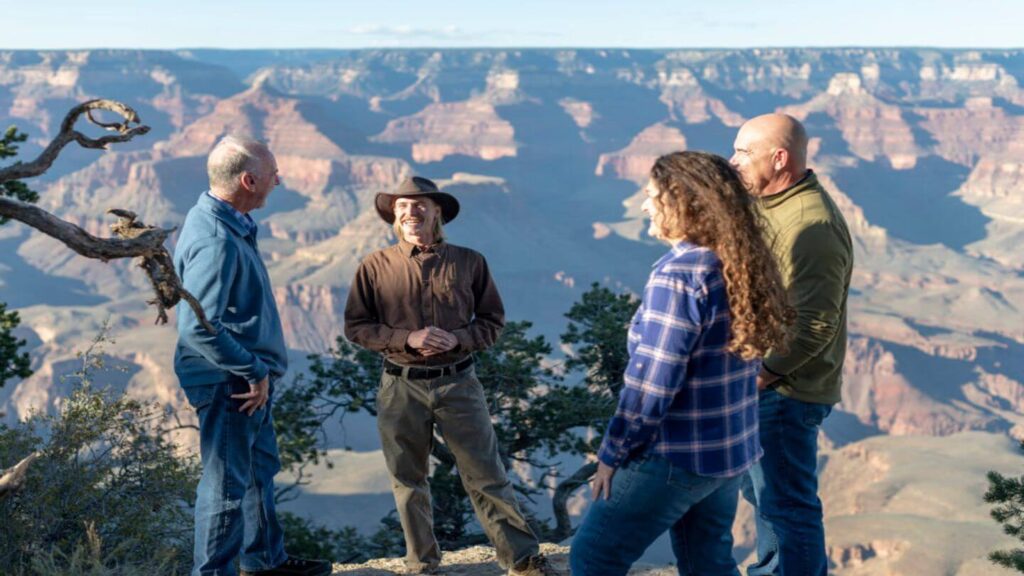

You can also reach the canyon on the Grand Canyon Railway, which provides a scenic and historic journey to the South Rim, departing from Williams, Arizona.
READ NEXT: Why September is the best month to visit these USA National Parks
How deep is the Grand Canyon?
At its deepest point, the Grand Canyon plummets more than a mile down, reaching a depth of over 6,000 feet (1,800 meters). This monumental chasm has been carved over millions of years by the Colorado River.
How wide is the Grand Canyon?
The width varies significantly from point to point. While it’s a slender 600 feet (182 meters) across at its narrowest, the average width from rim to rim is about 10 miles (16 kilometers). At its widest point, the canyon expands to 18 miles (29 kilometers) – that’s far enough that you can’t really grasp the details.
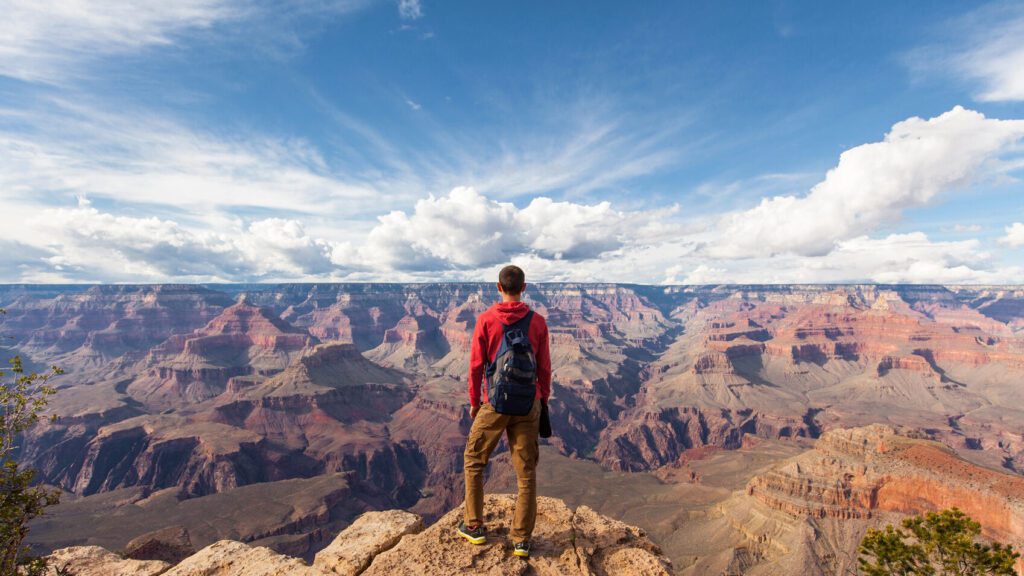

How long is the Grand Canyon?
The natural wonder stretches an impressive 277 miles (446 km) from end to end. This immense length is often a surprise to visitors who only experience a small portion of it from a handful of viewpoints – but there are dozens and dozens of unique rock formations, side canyons and scenic vistas to explore while in the area.
READ NEXT: 15 Best National Parks to Visit in the US
What river runs through the Grand Canyon?
The mighty Colorado River is the force of nature responsible for carving the Grand Canyon in northern Arizona over millions of years. The waters flow for 277 miles (445 kilometers) through the canyon’s depths. The river starts in the Rocky Mountains of Colorado, ending at the Gulf of California in Mexico some 1,450 miles (2,333 kilometers) later.
Tour not found.How was the Grand Canyon formed?
In simple terms? Erosion over millions of years. It began with the slow uplifting of the Colorado Plateau about 65 million years ago. This gradual rise created a steep path for the Colorado River. Over the next 5 to 6 million years, the river’s non-stop current, carrying abrasive sand and sediment, carved this deep channel into the plateau’s rock layers.
Wind, rain and other forces helped the river sculpt the immense chasm we see today. So, small continuous action leads to big change!
READ NEXT: 11 best National Parks for families in the U.S.
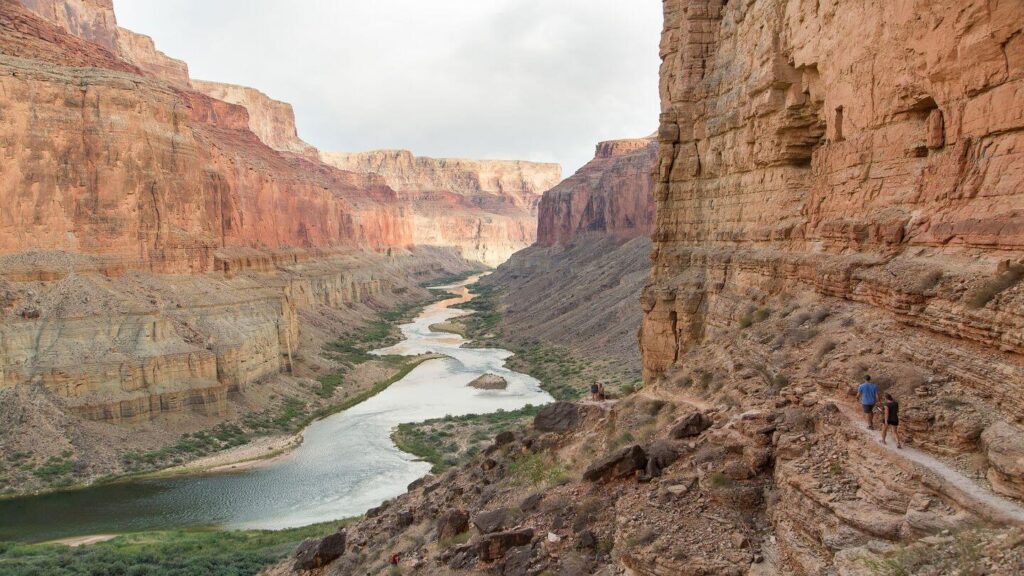

Is the Grand Canyon a national park?
Yes, it’s the Grand Canyon National Park. President Woodrow Wilson officially designated it a national park on February 26, 1919. This came after a long effort to protect the area, spearheaded by President Theodore Roosevelt, who had declared it a national monument in 1908.
Why is national park status important? Well, it ensures that the unique geological and ecological features are preserved and protected for all to enjoy. The park is managed by the National Park Service.
Tour not found.How can I help look after the Grand Canyon?
Being a good visitor is about protecting the canyon for future generations. The golden rule is simple: leave no trace. Everything you take with you – from water bottles to snack wrappers – should return with you. To protect the fragile ecosystem, avoid leaving litter, stay on designated paths and do not feed or approach wild animals.
What should I pack for a trip to the Grand Canyon?
Packing for the Grand Canyon means being prepared for anything. No matter the season, a good pair of sturdy, broken-in hiking or walking shoes are number one. Then look at the season and think about layers. Temperatures can vary dramatically between day and night and from the rim to the inner canyon. It may be worth packing a lightweight jacket or fleece and a hat for sun protection. Bring a refillable water bottle to stay hydrated. Don’t forget essentials like sunscreen, sunglasses and a small backpack for day trips. Don’t forget your camera and charger!
READ NEXT: What to pack when visiting America’s National Parks
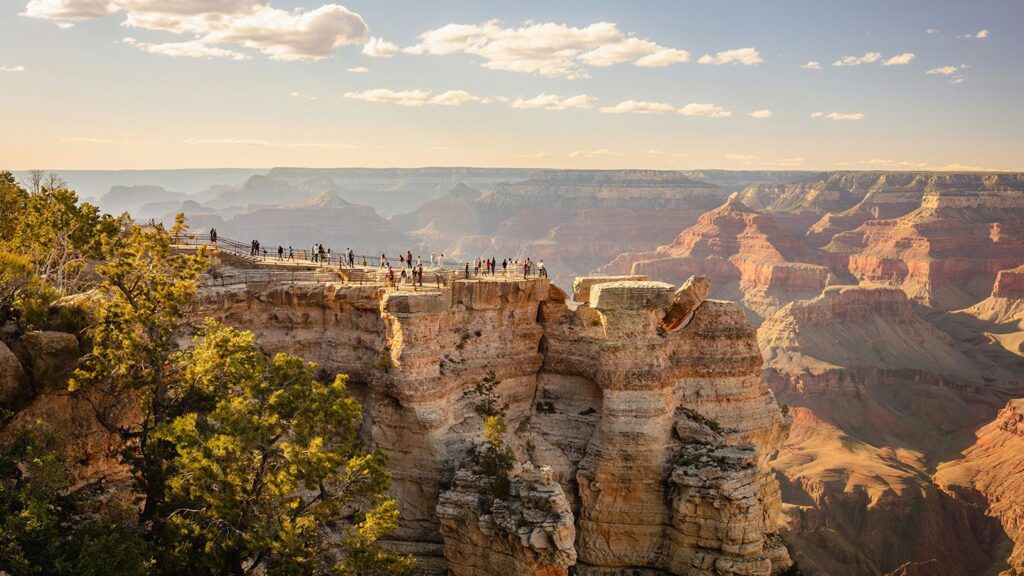

More FAQs about the Grand Canyon:
1. Does NASA own part of the Grand Canyon?
No, NASA does not own any part of the Grand Canyon. The majority of the canyon is a federal public land, managed by the National Park Service. While NASA doesn’t own the land, they have used the canyon’s unique and rugged geology as a valuable training ground for astronauts and geologists to prepare for planetary exploration.
Tour not found.How far is the Grand Canyon from Las Vegas?
The closest and most popular option for day-trippers is the Grand Canyon West Rim, located just over 130 miles (209 milometers) away, or around a 2.5-hour drive. If you’re heading to the main part of the park – the South Rim – the drive is approximately 280 miles (450 milometers) and takes about 4.5 hours.
READ NEXT: Adventurous dads will love these 7 active tours
That’s our complete travel guide to visiting the Grand Canyon. Any questions? Leave us a comment….